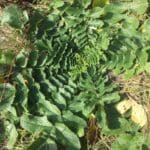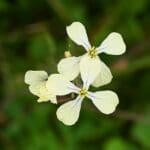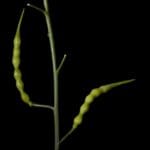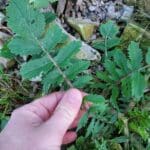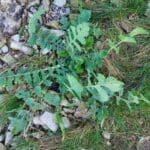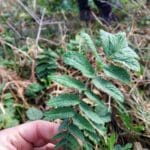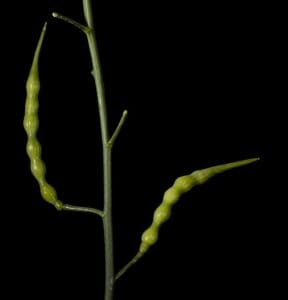Sea Radish / Edible / Spring / Summer
Common Names
Sea radish
Botanical Name
Raphanus Maritima
Scientific Classification
Kingdom – Plantae
Order –Brassicales
Family – Brassicaceae
Physical Characteristics for Sea Radish
Sea radish is a Biennial growing 0.8 m (2ft 7in) It the first year only a rosette of leaves forms, with flowers and seeds coming in the second year
Leaves
Long up to 30cm and divided into lots of rounded lobes coming off the central vein, which is often a pinkish-red colour. They grow in a rosette and are very rough textured.
Flowers
The flowers are cross-shaped with 4 bright yellow petals, similar to its relatives in the cabbage family.
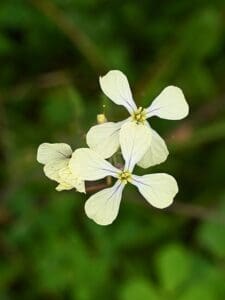
Fruit
The seed pods are a very distinctive shape, with 2 or 3 distinct ‘peas’ and a long tapering end.
Stems
Stems are thin and spindly, growing to around 1m and branching to hold a cloud of small flowers
Habitat
Europe, including Britain, from Scandinavia to the Mediterranean and Black sea. It grows on the coast line, preferring sandy and stony shorelines just above the driftwood line.
Known Hazards
None known. Consuming large amounts could irritate the mouth and intestines
Could be Confused with
It is very similar to Wild radish (raphanus raphanistrum), which has white or pink flowers rather than yellow. The two can pollinate each other and form hybrids. The flowers and leaves could be mistaken for others in the cabbage family, but all of them are edible .
Edible Uses
The whole plant is hot and peppery tasting, a bit like cultivated radishes, wasabi and a hint of cabbages. Young leaves, flowers and young seed pods can be eaten raw or cooked. When the seed pods mature and harden too much to eat raw, they seeds can be ground and used as a spice, like mustard seeds. The leaves can be added to salads, blitzed into a spicy sauce or mixed with other leaves and cooked as a potherb. The flowers can be sprinkled on a salad for a peppery kick, and the root can be used as a substitute for horseradish.
Appears in early spring, before many other greens. It is in flower from May to November
Notes on Herbal uses
None known, although the closely related Wild Radish has some history being used for skin complaints
Extra notes from the Foragers



